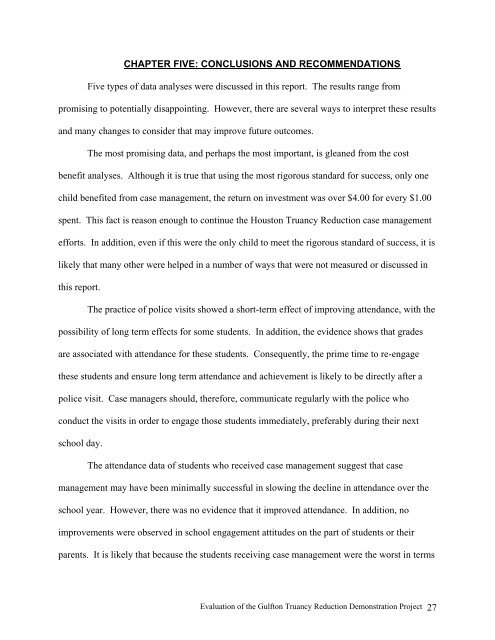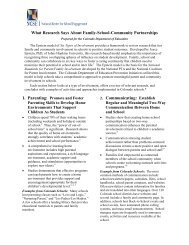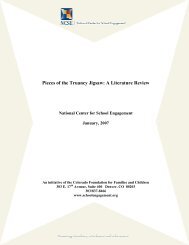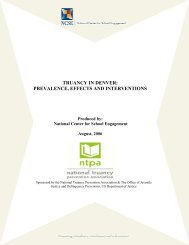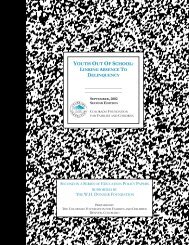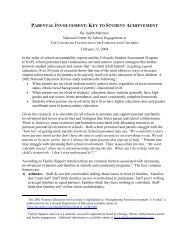Gulfton Truancy Reduction Demonstration Project, Houston, TX
Gulfton Truancy Reduction Demonstration Project, Houston, TX
Gulfton Truancy Reduction Demonstration Project, Houston, TX
You also want an ePaper? Increase the reach of your titles
YUMPU automatically turns print PDFs into web optimized ePapers that Google loves.
CHAPTER FIVE: CONCLUSIONS AND RECOMMENDATIONS<br />
Five types of data analyses were discussed in this report. The results range from<br />
promising to potentially disappointing. However, there are several ways to interpret these results<br />
and many changes to consider that may improve future outcomes.<br />
The most promising data, and perhaps the most important, is gleaned from the cost<br />
benefit analyses. Although it is true that using the most rigorous standard for success, only one<br />
child benefited from case management, the return on investment was over $4.00 for every $1.00<br />
spent. This fact is reason enough to continue the <strong>Houston</strong> <strong>Truancy</strong> <strong>Reduction</strong> case management<br />
efforts. In addition, even if this were the only child to meet the rigorous standard of success, it is<br />
likely that many other were helped in a number of ways that were not measured or discussed in<br />
this report.<br />
The practice of police visits showed a short-term effect of improving attendance, with the<br />
possibility of long term effects for some students. In addition, the evidence shows that grades<br />
are associated with attendance for these students. Consequently, the prime time to re-engage<br />
these students and ensure long term attendance and achievement is likely to be directly after a<br />
police visit. Case managers should, therefore, communicate regularly with the police who<br />
conduct the visits in order to engage those students immediately, preferably during their next<br />
school day.<br />
The attendance data of students who received case management suggest that case<br />
management may have been minimally successful in slowing the decline in attendance over the<br />
school year. However, there was no evidence that it improved attendance. In addition, no<br />
improvements were observed in school engagement attitudes on the part of students or their<br />
parents. It is likely that because the students receiving case management were the worst in terms<br />
Evaluation of the <strong>Gulfton</strong> <strong>Truancy</strong> <strong>Reduction</strong> <strong>Demonstration</strong> <strong>Project</strong> 27


